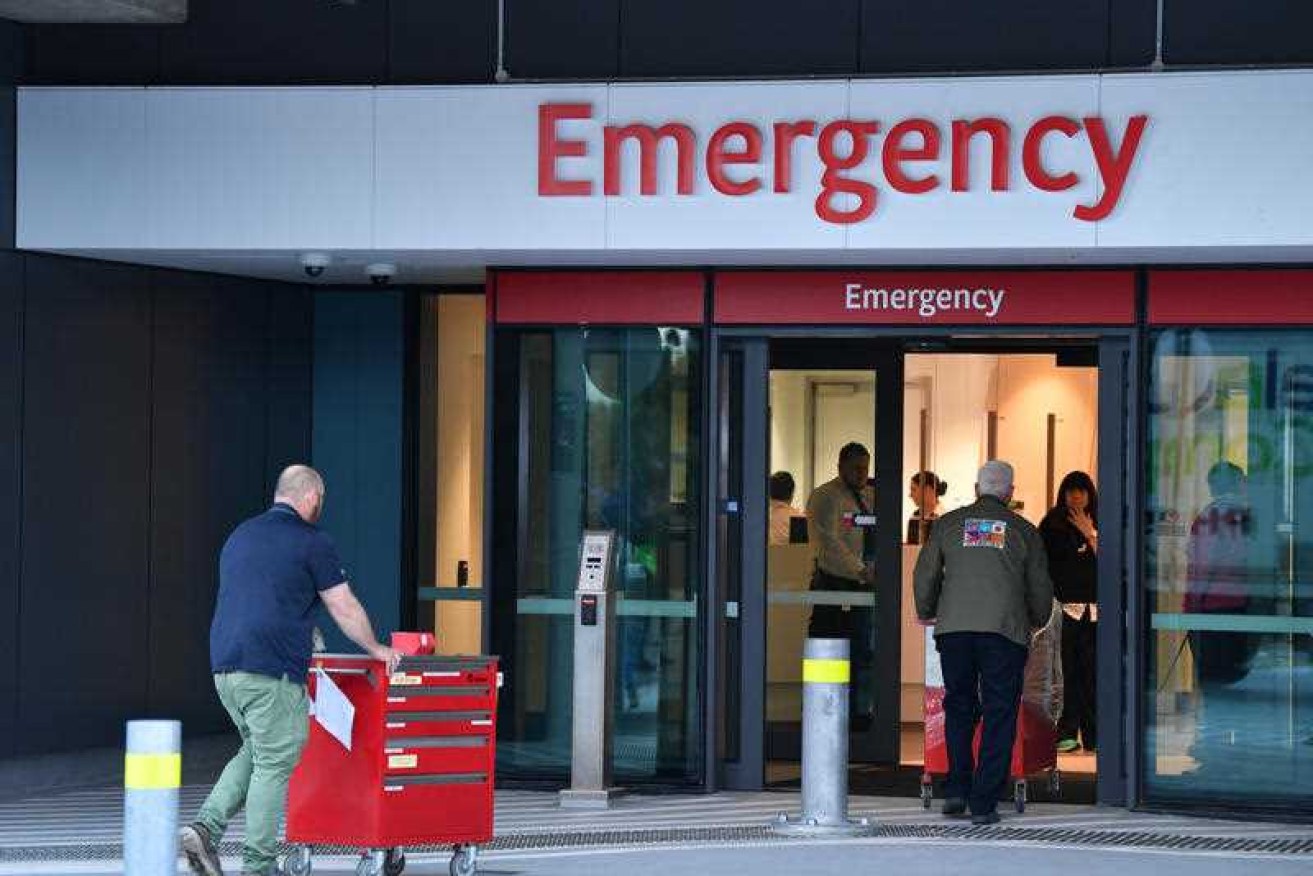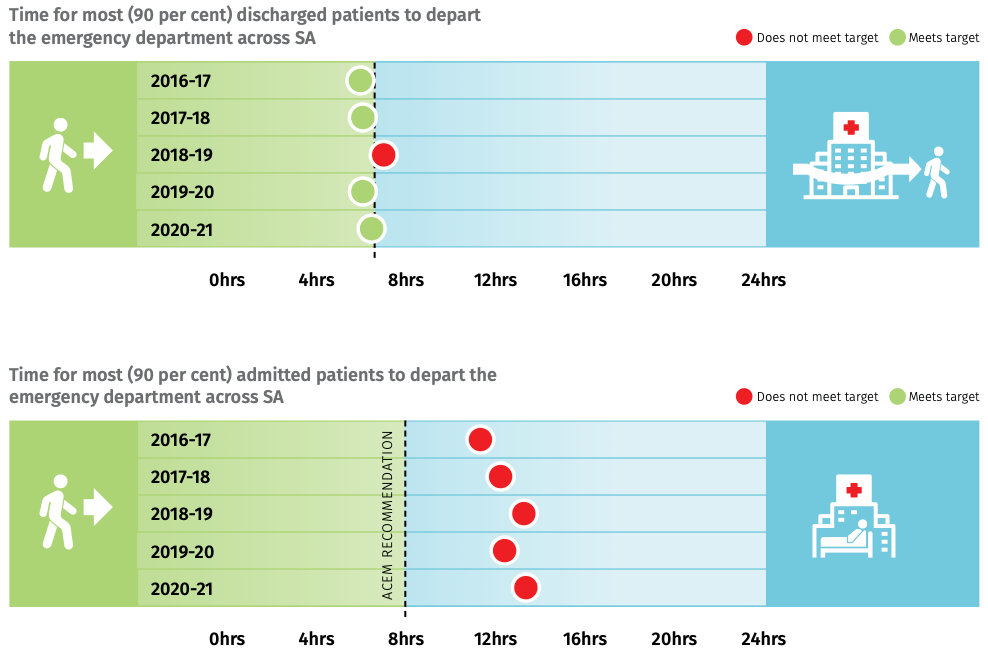Sick of waiting: More SA patients leave EDs without treatment
Long wait times at the state’s emergency departments have seen the number of patients walking out before being treated rise by 67 per cent over five years, a new report has found.

Photo: David Mariuz/AAP
The Australian College for Emergency Medicine’s inaugural “State of Emergency” report, released this morning, shows seven per cent of all South Australians who came an emergency department in 2020-21 either did not wait for treatment, or left at their own risk.
That was a 67 per cent increase from 2016-17.
Emergency physician and the college’s SA faculty chair Dr Michael Edmonds told InDaily that the spike was “concerning”, with hospitals usually planning for between four to five per cent of patients leaving early.
“It is concerning because we don’t have a full idea of why these people are coming because they are leaving before we can do full assessments,” he said.
“There’s always risk there when people leave early – they’ve come obviously seeking treatment for something and we’ve not been able to provide that to them.”
Edmonds said most people who leave before treatment do so because they no longer want to wait.
The Australian College for Emergency Medicine (ACEM) report shows in 2020-21, it took six hours and 34 minutes for most – 90 per cent – of discharged patients to leave SA emergency departments.
The length of stay for patients who required admission to hospital was almost twice as long at 12 hours and 46 minutes.
ACEM recommends that 90 per cent of patients who require hospital admission should spend no longer than eight hours in the emergency department.

Graph: Australian College for Emergency Medicine
“Most of these people that do leave are lower acuity – they are people that are often coming not by ambulance but walk in, and it comes down to waiting at the end of the day,” Edmonds said.
“There may be some… (patients) that get advice from the triage nurse or the nurse who goes to assess them that there are alternative treatments, or alternative places to go.
“The clinicians in the emergency department certainly feel that the situation for our patients has been gradually getting worse in that there are longer waits.”
Edmonds said in South Australia, doctors were feeling “a lot of frustration, stress and a degree of burnout” due to ongoing emergency department backlogs.
He said while doctors welcomed state government funding for extra doctors, nurses and hospital upgrades, those measures would take time to be implemented on the ground.
“This government has been listening, they’ve been saying all the right things and putting activity and resources towards the areas we think are probably going to make a difference, but there’s no quick-fix here. They’re all longer-term solutions,” he said.
“What we really need to see is this change in the movement through our system, all the way from the far end of a patient’s journey through our health system through discharge from hospital and having adequate care in our community.
“If we start there and work our way backwards, adequate care in the community means people can go home earlier and people are having a more efficient treatment while they’re in hospital.”




